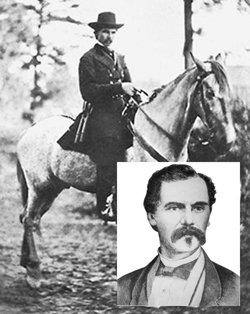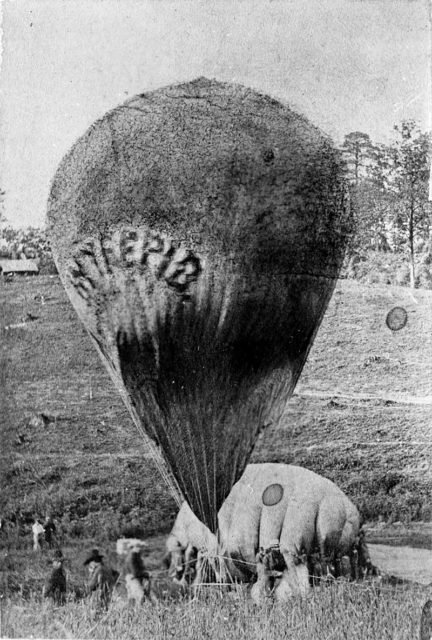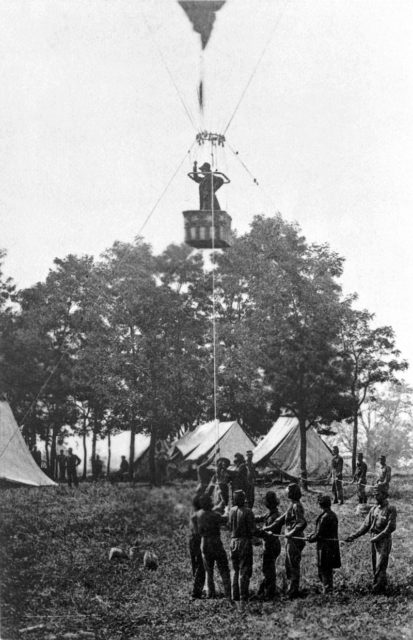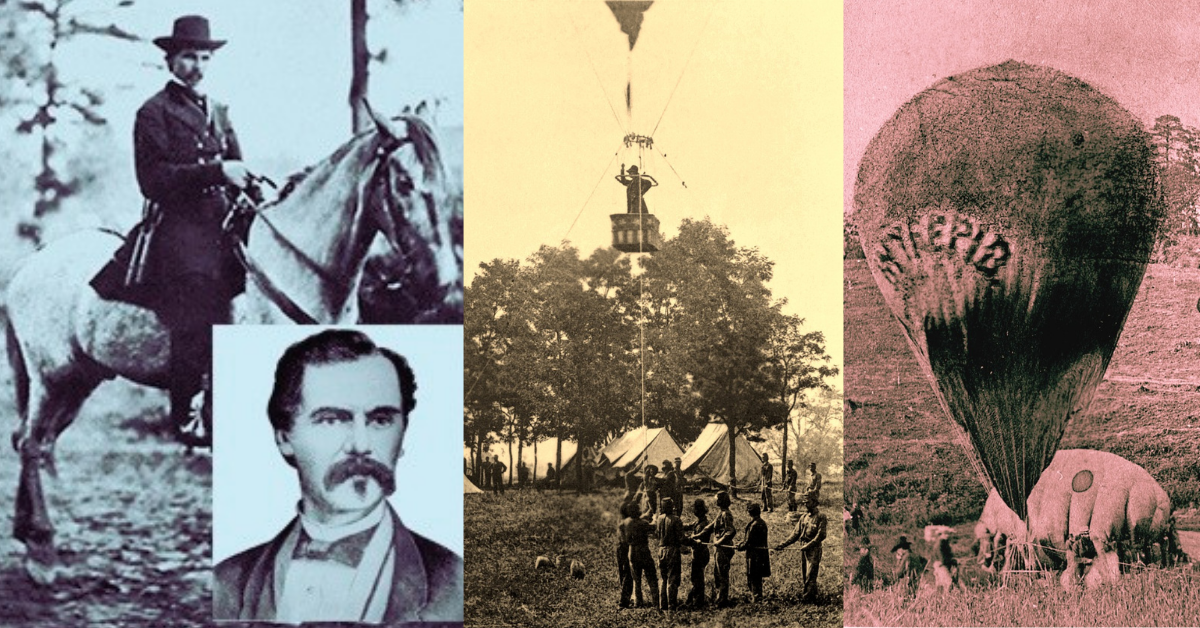An air balloon and gunfire is not something you’d usually want to mix together, but the Union Army certainly did so with respectable results during the American Civil War. They were operated by the Balloon Corps, which used them as primitive platforms for forward observers and reconnaissance. At the time, the Union Army did not fully capitalize on the potential tactical advantages offered by the balloons, but their use improved the construction and operation of balloons and paved the way for later, full-fledged aerial reconnaissance.
At the time of the American Civil War, a formal air corps was still nearly 50 years away, and even the concept of a pilot was not yet commonplace. The novel idea of using balloons on the battlefield was pushed by Thaddeus S. C. Lowe, a highly educated and respected scientist and inventor.
US President Abraham Lincoln also saw the balloons’ potential, giving the idea credibility.
This was not the first time balloons had been used for military purposes though, as the French had already utilized balloons during the French Revolutionary Wars 70 years before.
Thaddeus S. C. Lowe

Before the Civil War began in 1861, Lowe had been busy making preparations for a transatlantic crossing by balloon. When war broke out, he offered his vast knowledge on lighter than aircraft to the government.
As the government had never dealt with such a technology, they decided all related activities should be combined together into a dedicated unit to be lead by someone with plenty of experience in the field.
Lowe’s knowledge and research were well respected among the scientific community, so he was the government’s first choice for “Chief Aeronaut”.
He was invited to Washington D.C. to perform a display in a balloon for President Lincoln. Lowe and his balloon rose to a height of 500 ft, where he then described his view in a telegraph to the President. After this impressive display, Lowe was selected to lead the Balloon Corps as Chief Aeronaut.
Balloon Corps

By the end of 1961, the Balloon Corps was up and running.
A balloon could provide an exceptional vantage point from which to observe enemy forces, but they saw little action, mostly floating above the Eastern Theater of the war. Their use was decided by the general in command, many of whom did not consider the balloons as particularly important.
The Balloon Corps operated a total of seven balloons of various sizes. The larger balloons, like the Intrepid and the Union, could contain 32,000 cubic feet of lifting gas, which was supplied by hydrogen generators. They could carry up to five people but needed a considerable amount of time to inflate and take flight.
The smallest types could only carry a single man but were much quicker to prepare.
While in the air, an observer in a balloon could see the entire battlefield, and report information to the ground below via telegraph messages. In 1861, Lowe manned a balloon near Washington D.C. to direct artillery fire on an enemy position. Using flags, he signaled adjustments to the artillery until their rounds were landing with great accuracy.
Things didn’t always go to plan, however, as Union General Fitz John Porter would find out in the most terrifying way.
Porter, who recognized the value of the balloons, joined Lowe to experience the novel reconnaissance platform. When balloons were operated, they were always tethered to the ground to prevent them from drifting away.
On this particular ride, Porter chose to use a single tethering rope to speed up the ascent, rather than the three or four suggested by Lowe. Because of this, the lone rope snapped and the balloon drifted silently over Confederate lines below.
A few shots were fired toward the balloon, but the men kept their cool and actually managed to draw up some sketches of enemy positions. Thankfully, the balloon eventually drifted back to Union lines.
The end of the Balloon Corps

In mid-1862, Lowe contracted malaria in the swampy conditions of the Civil War and was forced to rest while he recovered. Upon his return, he discovered all of his equipment and resources for operating balloons had been given back to the Army.
After a pay dispute and falling out of favor with the Union Army, Lowe resigned from the Balloon Corps in May 1863. Control of the Corps was given to the Allen brothers, but they were unable to lead the unit as effectively as Lowe.
Before the end of 1863, the Balloon Corps was no more.
